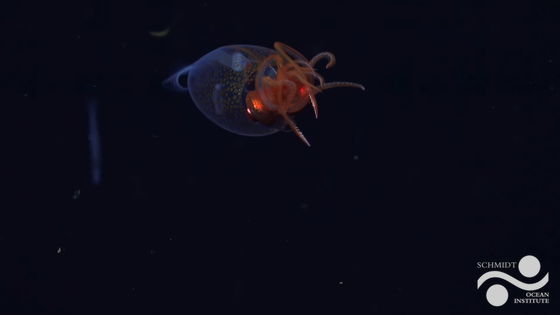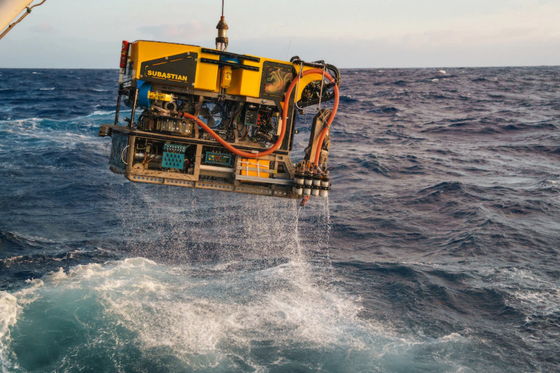The first ever video of a giant squid swimming in the deep sea has been released

The first ever footage
Deep sea craft filmed unprecedented footage of a colossal squid | Mashable
https://mashable.com/article/colossal-squid-first-ever-live-footage
The first specimen of the colossal squid was formally described by biologists in 1925. The colossal squid is a deep-sea creature that only lives in the Antarctic Ocean and is rarely seen, so its life cycle is largely shrouded in mystery. However, the Schmidt Ocean Institute , which specializes in ocean exploration, has succeeded in capturing the first footage of a living colossal squid swimming using the unmanned submersible SuBastian.
The first footage of a giant squid swimming alive can be seen below.
Colossal Squid, 1st Live Observation | Searching for New Species in the South Sandwich Islands - YouTube
The colossal squid photographed is still young, measuring just 30cm in length, and is far from mature. However, fully mature colossal squids can reach lengths of over 7m and weigh more than 550kg. Furthermore, the eyes of the colossal squid are the largest of any animal, measuring approximately 25cm in diameter.

'For 100 years, we've mainly encountered colossal squids as stomach contents of whales and seabirds, or as prey for caught Magellanic sharks,' said Kat Bolstad, a cephalopod expert at Auckland University of Technology, who helped examine the footage. 'This is honestly one of the most exciting observations I've made in my entire career studying deep-sea cephalopods.'
In addition, SuBastian is an unmanned submersible that can dive to a depth of about 4,500 meters, and succeeded in photographing this giant squid off the coast of the South Sandwich Islands in the Pacific Ocean on March 9, 2025. SuBastian photographed the giant squid at a depth of about 600 meters.
Below is the unmanned submarine SuBastian used to photograph the giant squid.

Derek Sowers, leader of the National Oceanic and Atmospheric Administration (NOAA) exploration team, explained why they use unmanned submersibles like SuBastian. 'When you go out to the deep sea, you always find something. You always find something you've never seen before,' he said .
'Systematic searches for new drugs have revealed that marine invertebrates produce more antibiotics, anticancer drugs, and anti-inflammatory substances than any other terrestrial group of organisms,' NOAA wrote on its website as a reason for the ocean exploration.
Related Posts:







